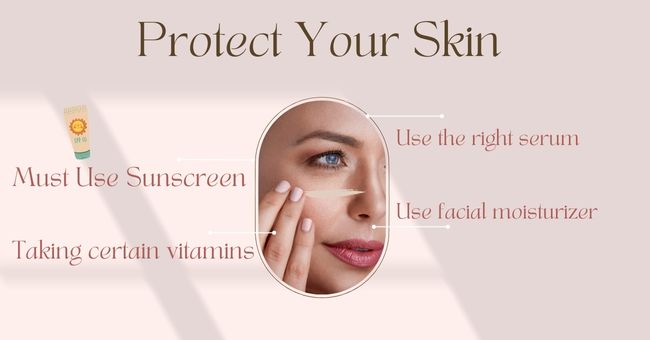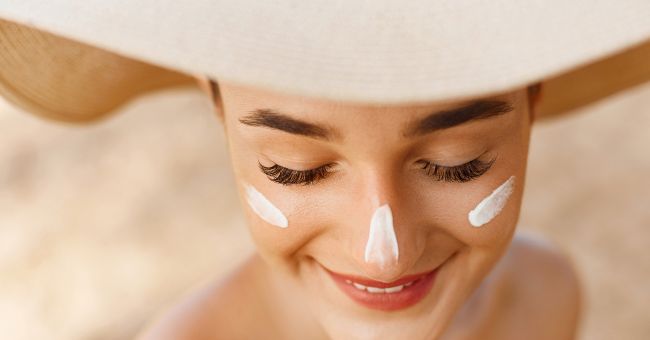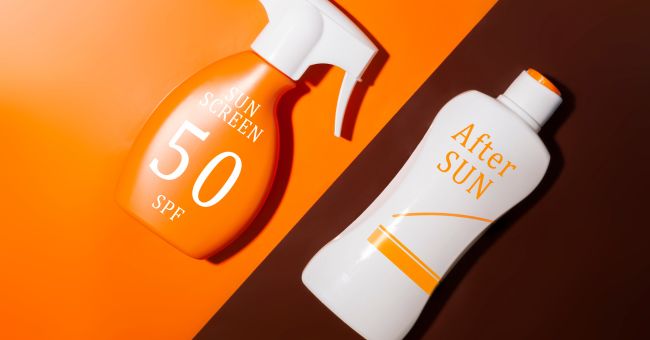You should always Protect your skin from the sun because the sun provides us with warmth, light, and vitamin D. Also, prolonged exposure to its harmful UV rays can have detrimental effects on our skin. Overexposure to the sun can lead to sunburn, premature aging, and even increase the risk of skin cancer.
However, with the right knowledge and precautions, protecting our skin from the sun and enjoying the outdoors safely is possible. In this article, we will discuss how to protect our skin from the sun, along with detailed answers and practical tips.
Why is Sun Protection Important?
The first question that often comes to mind is why sun protection is so important. It’s crucial to understand that the sun emits two types of harmful ultraviolet (UV) rays: UVA and UVB. UVA rays penetrate deep into the skin, causing premature aging, wrinkles, and loss of elasticity.
On the other hand, UVB rays affect the outer layer of the skin and are responsible for sunburns. Both UVA and UVB rays can damage the DNA in our skin cells, increasing the risk of skin cancer.
Protect our skin from the sun;

To effectively protect our skin from the sun, it is crucial to understand the following reasons:
Prevent Sunburn:
Sunburns are not only painful and unsightly, but they also indicate that the skin has been damaged by the sun’s UV rays. Sunburns can occur within minutes of unprotected exposure to the sun and can cause redness, blistering, and peeling, which can be uncomfortable and harmful to the skin.
Reduce Premature Aging:
Prolonged exposure to the sun can cause premature aging, including the formation of wrinkles, fine lines, and age spots. These signs of aging are primarily caused by the breakdown of collagen and elastin fibers in the skin due to UV damage, leading to a loss of skin elasticity and firmness.
Lower Risk of Skin Cancer:
Exposure to UV radiation is a leading cause of skin cancer. Skin cancer is the most common type of cancer in the United States, and the risk increases with unprotected sun exposure over time.
Protecting our skin from the sun can significantly lower our risk of developing skin cancer, including deadly forms such as melanoma.
What are the Best Sun Protection Measures?

The measures are most effective in protecting our skin from the sun. There are various methods and products available, but it’s essential to know which ones are the most reliable. Here are some of the best sun protection measures to keep your skin safe from the sun:
Seek Shade:
- One of the simplest and most effective ways to protect your skin from the sun is to seek shade.
- Especially during peak sunlight hours between 10 a.m. and 4 p.m.
- If you’re spending time outdoors, try to stay under an umbrella or tree.
- And also Other forms of shade to minimize direct exposure to the sun.
Wear Protective Clothing:
- Clothing can provide an additional layer of protection against the sun.
- Choose loose-fitting, long-sleeved shirts, and long pants made from tightly woven fabrics that block out the sun’s rays.
- Darker colors tend to offer more protection than lighter colors.
- Don’t forget to wear a wide-brimmed hat to protect your face, neck, and ears from the sun.
Use Sunglasses:
- Sunglasses are not just a fashion statement; they also protect your eyes and the delicate skin around them from the sun’s harmful UV rays.
- Look for sunglasses that block 100% of UVA and UVB rays and have large lenses to cover as much of the eye area as possible.
Apply Sunscreen:
- Sunscreen is a crucial component of any sun protection routine. Choose a broad-spectrum sunscreen with a high SPF (Sun Protection Factor) of 30 or above.
- Apply it generously to all exposed skin, including the face, neck, ears, and backs of hands.
- At least 15-30 minutes before going out in the sun, and reapply every two hours or immediately after swimming or sweating.
Use Sun-Protective Accessories:
- In addition to clothing and sunscreen, other sun-protective accessories can help safeguard your skin from the sun’s harmful rays.
- For example, you can use a UV-protective umbrella, or wear a UV-blocking neck gaiter or face mask.
What are the Different Types of Sunscreens?

Sunscreen is a critical sun protection product, but with so many options available, it can be overwhelming to choose the right one. Understanding the different types of sunscreens can help you make an informed decision. Here are the different types of sunscreens available in the market:
Chemical Sunscreens:
Chemical sunscreens work by absorbing UV rays and converting them into heat, which is then released from the skin. They typically contain organic (carbon-based) compounds, such as oxybenzone, avobenzone, and octocrylene, among others. Chemical sunscreens tend to be lightweight, easy to apply, and can provide broad-spectrum protection against both UVA and UVB rays.
Physical Sunscreens:
Physical sunscreens, also known as mineral sunscreens, work by sitting on top of the skin and forming a protective barrier that reflects UV rays away from the skin. They contain inorganic compounds, such as zinc oxide and titanium dioxide.
Which are known to be safe and effective in blocking both UVA and UVB rays. Physical sunscreens are generally well-tolerated by sensitive skin and start working immediately upon application.
Combination Sunscreens:
Combination sunscreens are a blend of chemical and physical sunscreens, combining the benefits of both types. They may contain a combination of organic and inorganic compounds to provide broad-spectrum protection against UVA and UVB rays. Combination sunscreens can offer the convenience of easy application and a lightweight feel on the skin, while also providing a physical barrier for added protection.
Water-Resistant Sunscreens:
Water-resistant sunscreens are specifically formulated to stay on the skin even when exposed to water or sweat, making them ideal for outdoor activities or water sports. They are designed to maintain their effectiveness for a certain period (usually 40-80 minutes) in water before needing to be reapplied.
Spray Sunscreens:
Spray sunscreens are a popular option for easy and convenient application, especially for large areas of the body. They typically come in aerosol or pump spray bottles and can be quickly sprayed onto the skin. However, it’s important to use them with caution and follow the instructions carefully to ensure proper coverage and avoid inhaling the spray.
Tinted Sunscreens:
Tinted sunscreens are a great option for those who want to combine sun protection with some coverage for the skin. They contain a tint that helps even out the skin tone and provides some light coverage while protecting against the sun’s harmful rays.
How to Apply Sunscreen Correctly?
Using sunscreen correctly is crucial for effective sun protection. Here are some key tips on how to apply sunscreen properly:

Apply Enough Sunscreen:
Most people do not use enough sunscreen, which can significantly reduce its effectiveness. The American Academy of Dermatology recommends using about one ounce (or a shot glass full) of sunscreen for each application to cover the entire body. Don’t forget to apply it to all exposed areas, including the face, neck, ears, and other areas that will be exposed to the sun.
Apply Sunscreen Before Sun Exposure:
Sunscreen needs time to absorb into the skin and provide optimal protection. Apply sunscreen for at least 15-30 minutes before going out in the sun.
Reapply Sunscreen Regularly:
Sunscreen wears off over time due to sweat, wiping, and exposure to water. It’s important to reapply sunscreen every two hours or immediately after swimming or sweating to maintain continuous protection. If you are using a water-resistant sunscreen, still remember to reapply after the recommended time in the water.
Don’t Forget the Often-Missed Areas:
Don’t forget to apply sunscreen to commonly overlooked areas such as the neck, back of hands, ears, scalp, and feet.
Conclusion!
In conclusion, protecting your skin from the sun is crucial to prevent sunburn. As well as, premature aging, and reducing the risk of skin cancer. It’s also important to choose the right sunscreen for your skin type. Reapply it regularly, especially after swimming or sweating.
By following these sun protection tips and being mindful of sun exposure, you can enjoy the outdoors safely. while keeping your skin healthy and protected from the harmful effects of the sun.
Don’t forget to perform regular skin checks and consult a healthcare provider or dermatologist. If you notice any concerning changes in your skin. Stay sun-safe and take care of your skin!
Frequently Asked Questions!
1. Why is it important to protect your skin from the sun?
A: Protecting your skin from the sun is crucial because prolonged sun exposure can lead to skin damage, premature aging, and an increased risk of skin cancer.
2. How can I protect my skin from the sun?
A: Here are some essential steps to protect your skin from the sun:
- Apply sunscreen with a broad-spectrum SPF of 30 or higher to all exposed skin.
- Reapply sunscreen every two hours, or more frequently if sweating or swimming.
- Seek shade or limit sun exposure between 10 a.m. and 4 p.m. when the sun’s rays are strongest.
- Wear protective clothing, such as wide-brimmed hats, long-sleeved shirts, and sunglasses.
- Use an umbrella or sunshade when spending time outdoors.
- Be cautious near reflective surfaces like water, sand, or snow, as they can intensify sun exposure.
3. Are all sunscreens the same?
A: No, sunscreens can vary in terms of their ingredients, SPF levels, and types (chemical or physical). Look for broad-spectrum sunscreens that protect against both UVA and UVB rays, and choose one that suits your skin type and preferences.
4. Do I still need sunscreen on cloudy days?
A: Yes, even on cloudy days, the sun’s harmful UV rays can penetrate the clouds and cause skin damage. It’s important to wear sunscreen daily, regardless of the weather conditions.


